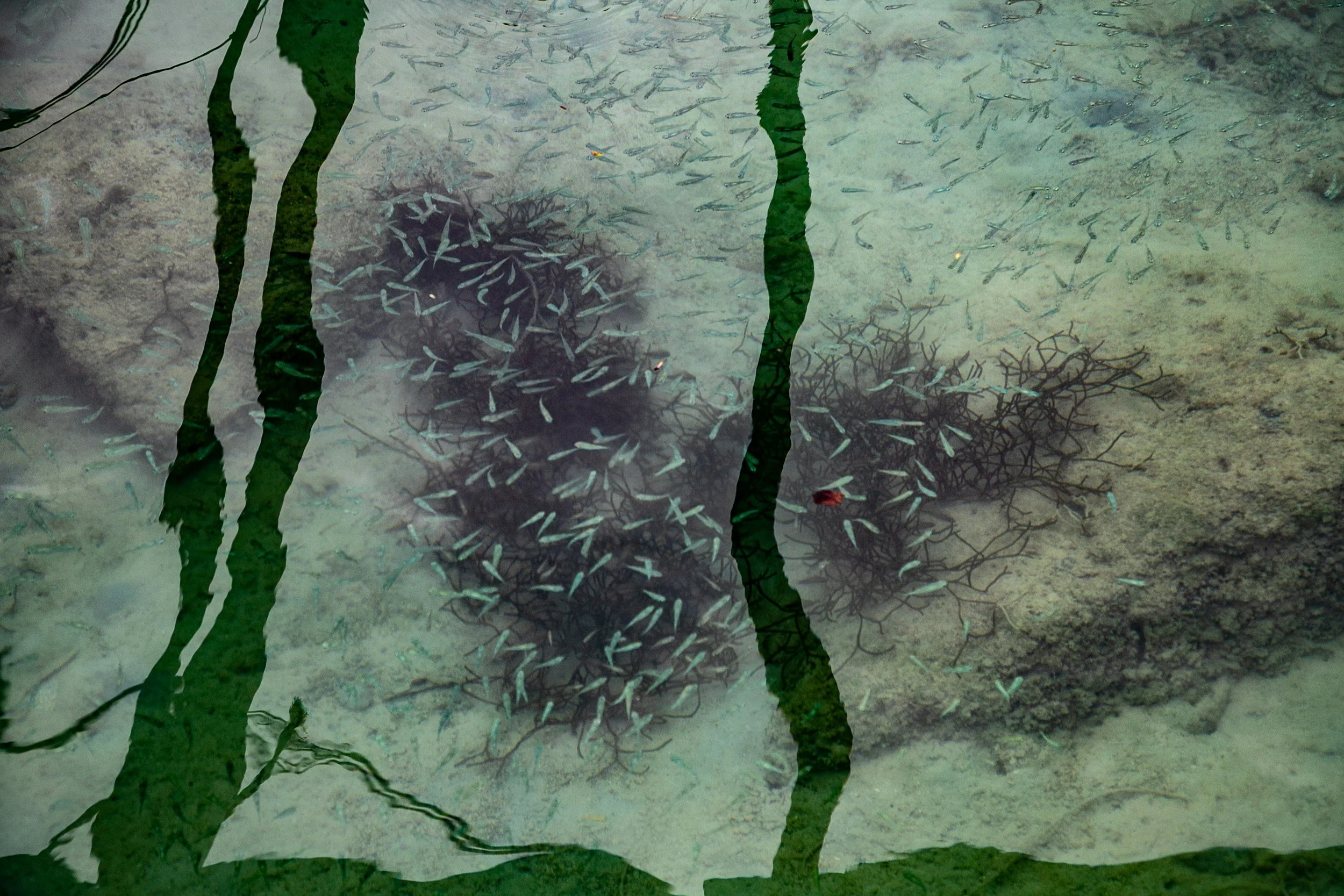Observation Tips
This page offers practical tips on how to identify social behaviours, estimate group sizes, and observe fish ethically. If you’re looking for step-by-step explanations of every field in the observation submission form, the full Contributor Guide provides detailed instructions for each question.
How to Recognise Shoaling vs Schooling
Shoaling
Individuals stay together but move independently.
Body orientations vary; no strong alignment.
Group spreads loosely and often changes shape.
Example: mixed reef fish grazing near one another.
Schooling
Individuals swim in the same direction, tightly aligned.
Movement is synchronised and coordinated.
Group maintains a defined shape (torpedo, ball, sheet).
Example: jacks, anchovies, herrings in fast-moving coordinated groups.
Quick rule of thumb:
If the group seems to move as one → schooling.
If the group is together but independent → shoaling.
How to Estimate Group Size
We use broad categories so contributors don’t need perfect accuracy.
Solitary: a single individual
Pairing: two individuals maintaining close association
Small groups (3–10): easy to count directly
Medium groups (10–100): estimate by counting a subset and scaling
Large groups (100-1000): approximate; video or photo helps
Huge groups (>1000): again, this will likely be approximate
Fission–fusion: groups frequently split and merge; note range or behaviour
Unsure: use when visibility, motion, or crowding prevents estimation
Tips
Count a cluster section, then multiply by the number of similar-sized clusters.
For very tight schools, estimate area covered relative to body size.
When possible, upload a photo/video — our validators can help.
How to Observe Behaviour Ethically
We encourage low-impact, respectful observation across all contributor groups — including researchers, divers, naturalists, aquarists, and recreational or professional fishers. The goal is simply to record behaviour as it naturally occurs, without creating unnecessary disturbance.
Do
Maintain a distance or position that avoids altering behaviour whenever feasible (e.g. when snorkelling, diving, boating, or approaching a shoal).
Use natural light where possible or diffuse lighting if underwater.
Allow behaviour to occur spontaneously before recording it.
Note any pre-existing disturbances (boats, nets already set, predators, turbidity, etc.).
For fishers:
• You can record observations before, during, or after your normal fishing activity, as long as the behaviour you describe is not artificially induced.
• Behaviour during routine capture (e.g. approach, avoidance, group cohesion) is valid — just describe the context clearly in the notes.
Do not
Induce behaviours through harassment, excessive pursuit, or unnecessary manipulation.
Create artificial aggregations solely to obtain an observation (e.g. chumming or baiting only for behavioural recording — routine fishing bait or lure use is fine).
Handle or confine fish beyond what is normal for your activity unless it forms part of an ethical, approved study.
How to Identify Habitat Type
Choose the category that best fits the dominant environment.
Freshwater
River/stream: flowing water, directional current
Lake/pond: standing water, no consistent current
Brackish: estuaries, mangroves, lagoons
Marine
Coastal marine: shallow open coastal waters, not reef-structured
Benthic marine: demersal, near the sea floor (sand, mud, rock)
Pelagic marine: open water, away from bottom or shore
Coral reef: identifiable reef structure, corals, reef fish assemblages
Tidepool: isolated pockets of water in rocky shores
If the habitat is unusual or mixed, choose the closest match and provide a description.
How to Determine Life Stage
Use observable features rather than exact size.
Egg/embryo: often attached to substrate, inside capsules, or in brooding organs
Larval: often transparent, tiny, drifting or weak swimming, non-adult shape
Juvenile: miniature adult form, but not sexually mature
Adult: sexually mature or fully grown morphology
Spawning: courtship, chasing, nest guarding, pair formation, gamete release
Not sure: mixed groups, transitional stages, or unclear from viewing angle
Providing a photo or approximate body length helps clarify.
Additional Tips for Accurate Reporting
When in doubt, choose “unsure” and explain in the notes. We prefer cautious classification to an incorrect one.
Multiple behaviours can be selected if they occur in the same event
Ask for Help
If you are uncertain about any behaviour, classification, or field type you can contact the ShoalBase team, or upload images or video for validation
ShoalBase is a community-driven project — we’re here to support both beginners and experts in contributing high-quality behavioural data.






